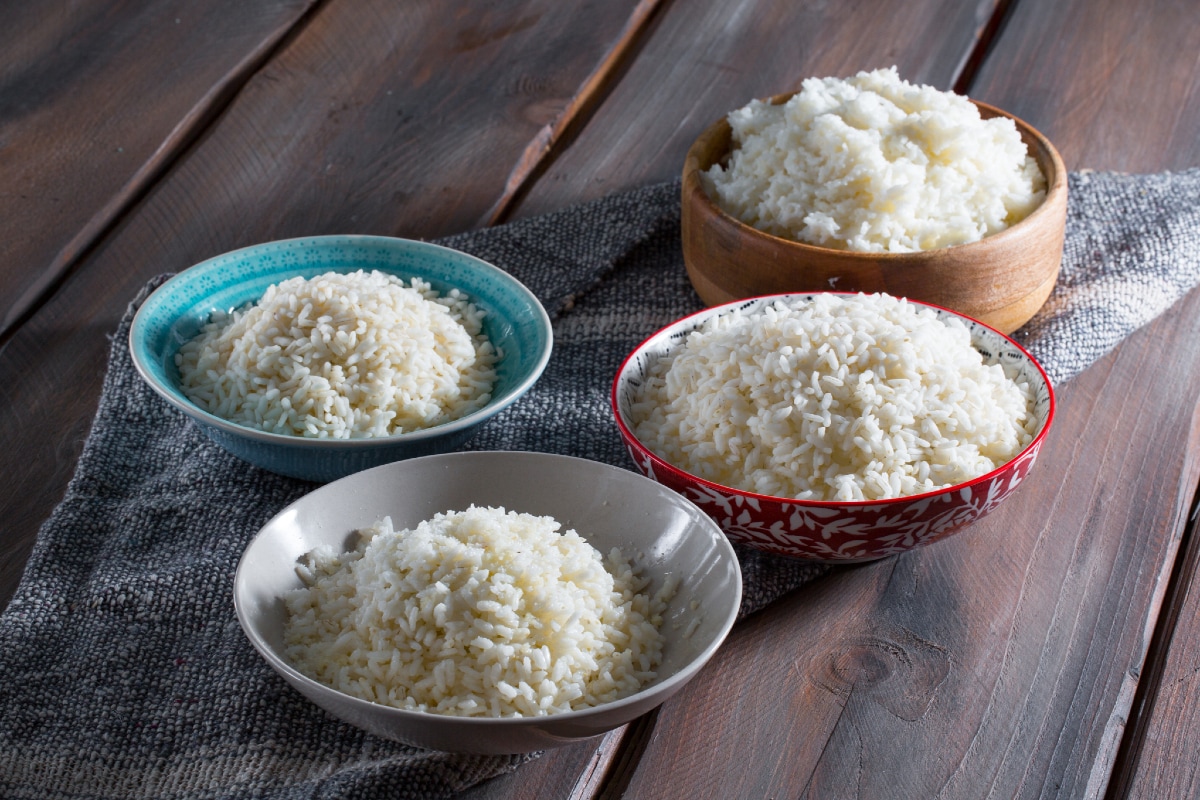Cantonese Rice
- Easy
- 40 min
- Kcal 196

Want to know how to cook boiled, steamed, pilaf, butter, and parmesan rice? You're in the right place! Our virtual cookbook of basic recipes is always bustling, so we decided to show you this simple and quick guide to never forget the most appropriate cooking methods again.
Rice is one of the most consumed grains in the world, ancient and highly digestible, it is gluten-free and therefore suitable for almost all diets. Starchy varieties are well suited for risottos, while those with less starch are perfect for fresh rice salads or as a side dish to Asian dishes.
But what's the difference between boiled rice and steamed rice? How is traditional pilaf rice or the more common butter and parmesan rice cooked? In this article, we answer all these questions. Meanwhile, here's how to cook rice and its varieties, let us know if anything is missing.
Ready to get your hands dirty? Here are some rice recipes you absolutely must try!

To prepare boiled rice, start by putting a pot of water on the stove. When it boils, add salt and pour in the rice 1. Cook it for about 20 minutes after which you can drain it 2. Here's how to cook boiled rice, plate it and season to taste with a drizzle of oil 3.

To prepare steamed rice, start by putting a pot of water on the stove and bring to a boil. In the meantime, rinse the rice 1 and drain it. Place a sheet of parchment paper on the steamer 2 and set it over the pot. Then transfer the rice 3 and spread it across the surface.

Cover with the lid 4 and let cook for about 20 minutes 5. This is how to cook steamed rice, plate it and season with a drizzle of oil 6.

To prepare pilaf rice, start by heating water in a saucepan. Continue by rinsing the basmati under running water 1. Drain it and meanwhile clean and chop the onion 2. Then melt the butter in a saucepan over low heat, so as not to burn it 3.

Add the onion 4 and sauté for a few minutes stirring 5 before pouring in the rice 6.

A quick stir 7 and pour in the hot water 8. Immediately cover with the lid and cook for about 10 minutes without stirring 9.

At the end of cooking, the water will have been completely absorbed, season with salt 10 and transfer to a bowl 11. Here's how to cook pilaf rice, serve it at the temperature you prefer 12.
This is the white version but if you want you can follow the traditional version of the Middle Eastern pilaf rice.

To prepare butter and parmesan rice, start by boiling the rice: pour it into boiling salted water 1 and after about 20 minutes drain it 2. In the meantime, pour the butter into a saucepan 3.

Melt it over very low heat 4 and when melted pour it into the pot with the drained rice 5. Cook over low heat for a few moments until the butter has been absorbed. At this point, add the grated Parmesan cheese, keeping just a little aside 6.

Give it a good stir 7, pour onto plates and top with a pinch of Parmesan kept aside 8. There you go, now you know how to cook butter and Parmesan rice 9.